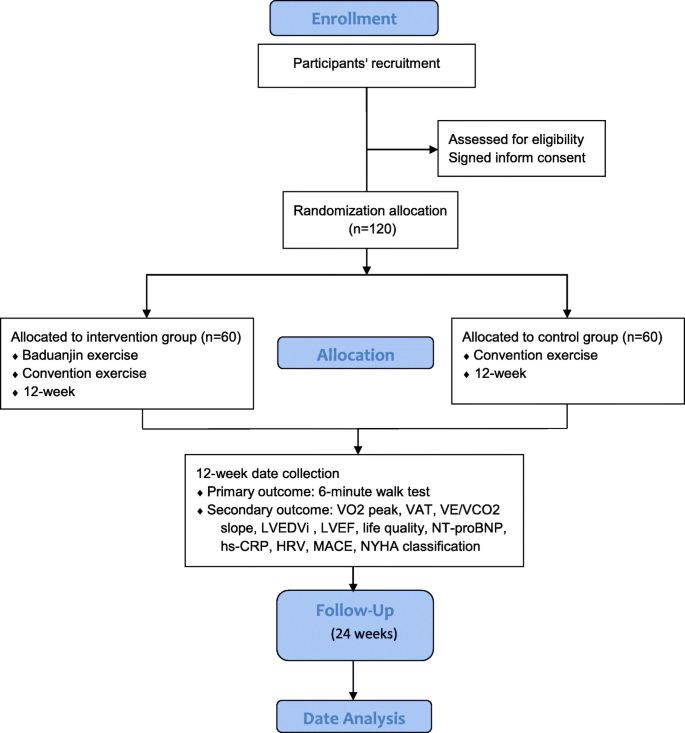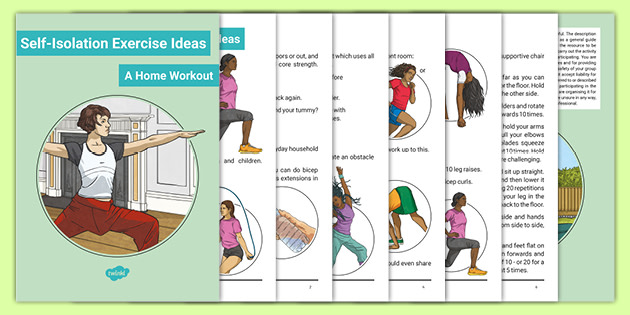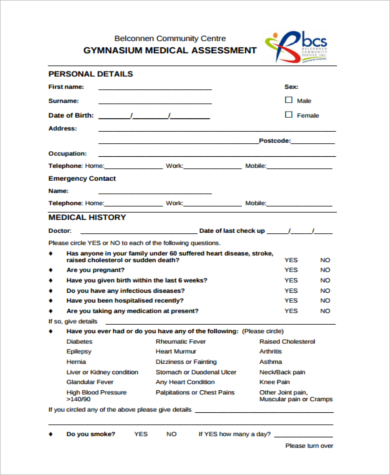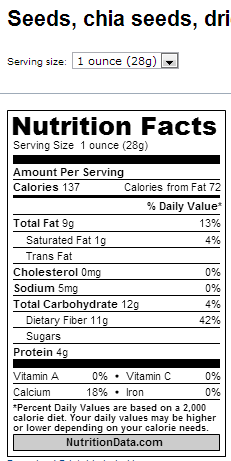A fitness assessment is a test or measurement completed by a fitness professional to get fitness or health information about a clien t. It can be biometric (related to the body) or assess the current level of fitness. Client questionnaires can serve as an assessment to collect personal information or additional health information.
A fitness assessment is a great benchmark to measure whether you are in a safe health zone or on target to hit a performance level. Due to the development of technology over the last 20 year. Fitness assessment has become easy to monitor and give more accuracy. So where are only the best of the best of high-level athletes could only have the tests done. The production of test fitness assessment kits has got easier has and more accessible that everybody can manage there own health and fitness level. For example the Fitbit.
[divder]
- Educating All Students (EAS) (201) table outlining test information; Format: Computer-based test (CBT) 40 selected-response items and 3 constructed-response items Time: 2 hours and 30 minutes total appointment time 15 minutes for CBT tutorial and nondisclosure agreement; 2 hours and 15 minutes testing time.
- Live well with fitness and health templates. Whether you’re training to run a 10k or trying to drop 10 pounds, take Microsoft health templates along for the ride. A health template helps you monitor your progress and keeps you accountable to your goals. Choose an Excel workout template to track your cardio and strength training minutes.
Rate my body
Rate my body one of the most often lines I get from a client. there are so many ways to rate your body. The first thing to understand is the difference between a health assessment and fitness assessments. There are two types of assessments. Maximal(true ability) and submaximal (protentional ability).
When we talk about health assessments we need to understand the components that make up the health.
What are the requirements of a fitness assessment?


In constructing fitness assessment, it is important to make sure that they really measure the factors required to be tested, and are thus objective rather than subjective. In doing so all fitness assessment should, therefore, be specific.
In conducting a fitness assessment, the following points should be considered:
- Each fitness assessment should measure ONE factor only
- The fitness assessment should not require any technical competence on the part of the athlete (unless it is being used to assess technique)
- Care should be taken to make sure that the athlete understands exactly what is required of him/her, what is being measured and why
- The test procedure should be strictly standardized in terms of administration, organization and environmental conditions
What are the benefits of fitness assessment
The results from tests can be used to:
- predict future performance
- indicate weaknesses
- measure improvement
- enable the coach to assess the success of his training program
- place the athlete in the appropriate training group
- motivate the athlete
What factors may influence fitness assessment results?
The following factors may have an impact on the results of a test (test reliability):
- The ambient temperature, noise level, and humidity
- The amount of sleep the athlete had prior to testing
- The athlete’s emotional state
- The medication the athlete may be taking
- The time of day
- The athlete’s caffeine intake
- The time since the athlete’s last meal
- The test environment – surface (track, grass, road, gym)
- The athlete’s prior test knowledge/experience
- The accuracy of measurements (times, distances etc.)
- Is the athlete actually applying maximum effort in maximal tests?
- Inappropriate warm up
- People present
- The personality, knowledge, and skill of the tester
- Athlete’s clothing/shoes
- The surface on which the test is conducted
- Environmental conditions – wind, rain, etc
Health-related components of fitness and health assessments
Aerobic endurance
Eas Daily Fitness Assessment
The ability to do a prolonged exercise routine using oxygen(walking/jogging) without getting tired
fitness assessments
maximum treadmill test
12 min copper run
Chester Step Test
Objective

The Chester Step Test was developed by Sykes (1998)[1] to monitor the development of the athlete’s cardiovascular system
Required Resources for fitness assessment
To undertake this test, you will require:
- A 15-30cm inch high bench or step
- Stopwatch
- Metronome or cadence tape
- Heart rate monitor
- Borg 6-20 perceived exertion table
- An assistant
The box height is determined as follows:
- 15cm – is generally suitable for those over 40 years of age who take little or no regular physical exercise and for those under-40’s who are moderately overweight.
- 20cm – is generally suitable for those under 40 years of age who take little or no regular physical exercise and for those under-40’s who are moderately overweight.
- 25cm – is generally suitable for those over 40 years of age who regularly take physical exercise with moderately vigorous exertion.
- 30cm – generally suitable for those under 40 years of age who regularly take physical exercise with moderately vigorous exertion
How to conduct the fitness assessment
Before starting the test, the assistance needs to record:
- The athlete’s Maximum Heart Rate (MHR) – use 220-age
- The athlete’s 80% of Maximum Heart Rate (MHR80) – use MHR x 0.8
The Chester Step Test is conducted as follows:
- The assistance explains to the athlete the test requirements:
- You will step up and down onto the box in time with the metronome.
- Every 2-minutes the metronome will be increased by 5 steps/minute.
- At each 2-minute period I will record your heart rate and ask you to tell me the Borg rating for your perceived exertion and if your heart rate is greater than your MHR80 or your perceived exertion level is above a certain value then the test will end.
- The test will end after 10 minutes of stepping
- Continue stepping whilst I record your heart rate and ask for your perceived exertion level
- The assistance checks the athlete’s understanding of the test requirements.
- The assistance explains to the athlete the test requirements:
- Set the metronome to 15 beats/minute
- The athlete steps up and down, one foot at a time, onto the box for 2 minutes
- After 2 minutes set the metronome to 20 beats/min
- The assistance records the athlete’s heart rate
- The athlete identifies their perceived exertion value on the Borg Scale
- If the heart rate is greater than the athlete’s MHR80 value or their perceived exertion value is greater than 14 then stop the test
- The athlete steps up and down, one foot at a time, onto the box for 2 minutes
- After 2 minutes set the metronome to 25 beats/min
- The assistance records the athlete’s heart rate
- The athlete identifies their perceived exertion value on the Borg Scale
- If the heart rate is greater than the athlete’s MHR80 value or their perceived exertion value is greater than 14 then stop the test
- The athlete steps up and down, one foot at a time, onto the box for 2 minutes
- After 2 minutes set the metronome to 30 beats/min
- The assistance records the athlete’s heart rate
- The athlete identifies their perceived exertion value on the Borg Scale
- If the heart rate is greater than the athlete’s MHR value or their perceived exertion value is greater than 14 then stop the test
- The athlete steps up and down, one foot at a time, onto the box for 2 minutes
- After 2 minutes set the metronome to 35 beats/min
- The assistance records the athlete’s heart rate
- The athlete identifies their perceived exertion value on the Borg Scale
- If the heart rate is greater than the athlete’s MHR80 value or their perceived exertion value is greater than 14 then stop the test
- The athlete steps up and down, one foot at a time, onto the box for 2 minutes
- After 2 minutes stop the test and record the athlete’s heart rate
Muscular Strength fitness assessment
The ability to move a maximal load that can be over for one repetition

1 Rm test
Testing and measurement are the means of collecting information upon which subsequent performance evaluations and decisions are made but, in the analysis, we need to bear in mind the factors that may influence the results.
Fitness assessment Objective
The objective of the bench press test is to evaluate an athlete’s upper body strength.
Fitness assessment Required Resources
To undertake this test, you will require:
- Barbell and weights
- Weighing Scales
- Bench
- Assistant
How to conduct the fitness assessment
This test requires the athlete to complete as many bench presses as possible with no rest.
- The assistant weighs and records the athlete’s weight
- The athlete warms up for 10 minutes
- The assistant loads the barbell with a weight close to the athlete’s one repetition maximum load.
- The athlete conducts bench presses until they are unable to continue
- The assistant acts as a spotter for the athlete and counts the number of successful bench presses
- If the number of bench presses exceeds 10 then the athlete rests for 10 minutes, the assistant increases the barbell weight and the athlete repeats the test
- The assistant uses the maximum load calculator to determine the athlete’s 1RM.
Single leg squat
Single arm press up
Muscular Endurance
The ability to move a submaximal load for a prolonged period of time without getting tired.
Wall Sit
Objective
To monitor the development of the athlete’s quadriceps strength endurance.
Required Resources for fitness assessment
To undertake this test, you will require:
- Flat non-slip surface
- Smooth wall
- Stopwatch
- Assistant

How to conduct the testThis test requires the athlete to balance on one leg in the squat position for as long as possible.
|
Assessment
The following normative data is available for this test.
The following table (Arnot and Gaines 1984) is the national norms for 16 to 19-year-olds.
| Gender | Excellent | Above Average | Average | Below Average | Poor |
| Male | >102 secs | 102 – 76 secs | 75 – 58 secs | 57 – 30 secs | <30 secs |
| Female | >60 secs | 60 – 46 secs | 45 – 36 secs | 35 – 20 secs | <20 secs |
Flexibility
The range of movement around a joint or series of joints
Sit and reach
Body Composition
The percentage of fat compared to total body weight
Measuring body fat percentage is an easy method of discovering correct body weight and composition. Beneath the skin is a layer of subcutaneous fat, and the percentage of total body fat can be measured by taking the ‘skinfold’ at selected points on the body with a pair of calipers. This test only requires four measurements. A similar alternative method is the Yuhasz skinfold test which requires six measurements.
Objective
The objective of this test is to monitor the athlete’s level of body fat.
Required ResourcesTo undertake this test, you will require:
|
Measurement Sites
The assistant records measurements taken from the following sites:
|
How to conduct the test
|
Fitness-related components of fitness and fitness assessment
Stability
The ability to maintain joint alignment in a static and dynamic environment
Balance
Required Resources for the fitness assessment
To undertake this test, you will require:
- Warm dry location – gym
- Stopwatch
- Assistant
Eas Daily Fitness Assessment
How to conduct the fitness assessment
|
fitness assessment
The following normative data is available for this test.
The following table (Johnson & Nelson 1979) are national norms for 16 to 19-year-olds.
| Excellent | Above Average | Average | Below Average | Poor | |
| Males | >50 | 41-50 | 31-40 | 20-30 | <20 |
| Females | >30 | 23-30 | 16-22 | 10-15 | <10 |
The following table (Schell & Leelarthaepin 1994) are norms for male and females.
| Excellent | Above Average | Average | Below Average | Poor | |
| Males | >50 | 37-50 | 15-36 | 5-14 | <5 |
| Females | >27 | 23-27 | 8-22 | 3-7 | <3 |
We also have a few more pages for one nutrition support
Marketing Your Ergonomics ServicesConnecting with your client base can be challenging for many professional practitioners. This two hour, self-study course is designed to teach you the basic tools for marketing your ergonomics services in a clear, user-friendly way.
Create an Account
Take advantage of the features and benefits that make shopping and registering for courses faster and easier.